OUR HISTORY IS THE FOUNDATION OF OUR FUTURE
Based in the south of France since 1918, our history was built on relationships, commitment and determination. 100 Years later, we still operate with that same spirit to power our customers’ success.
Baudouin History

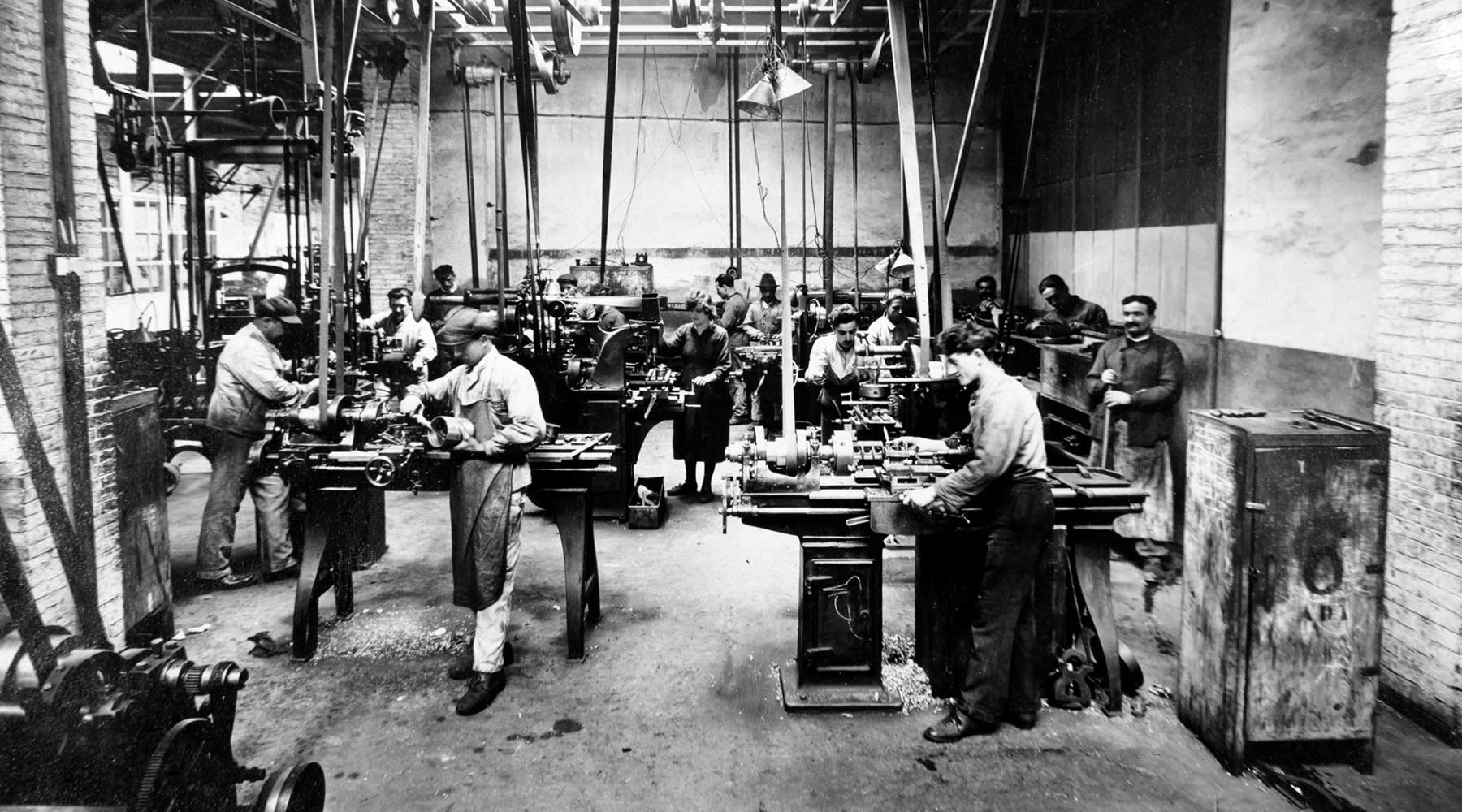
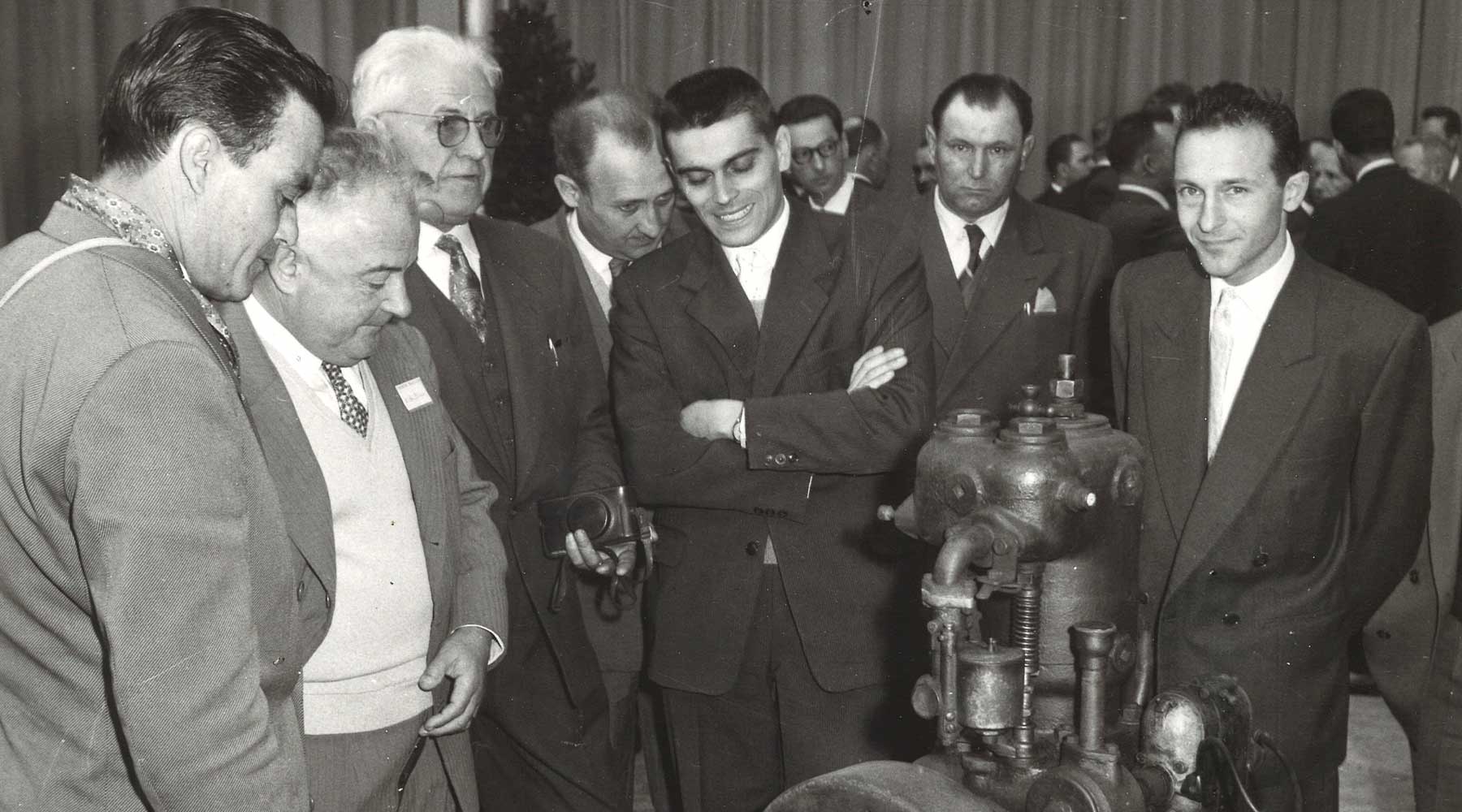
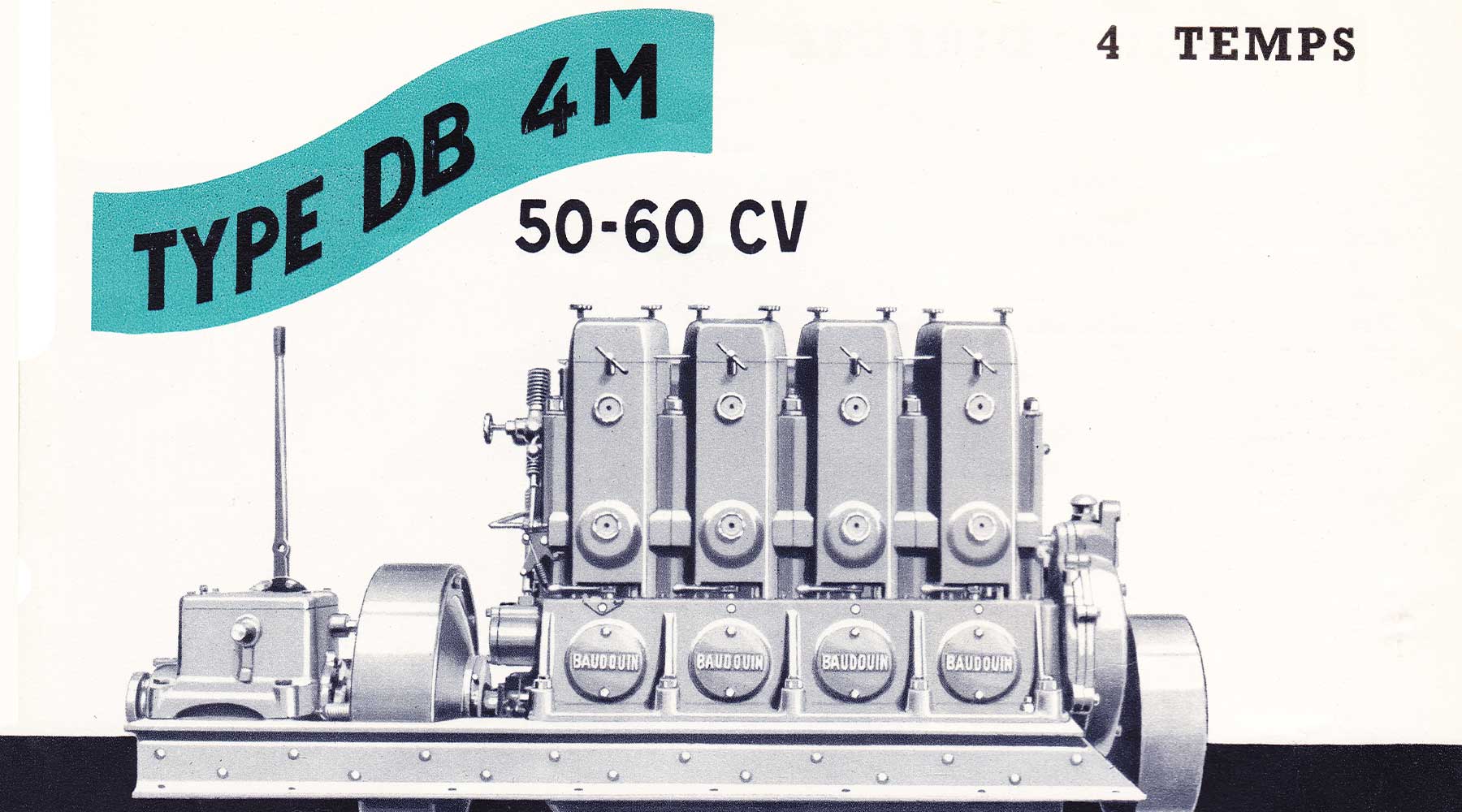
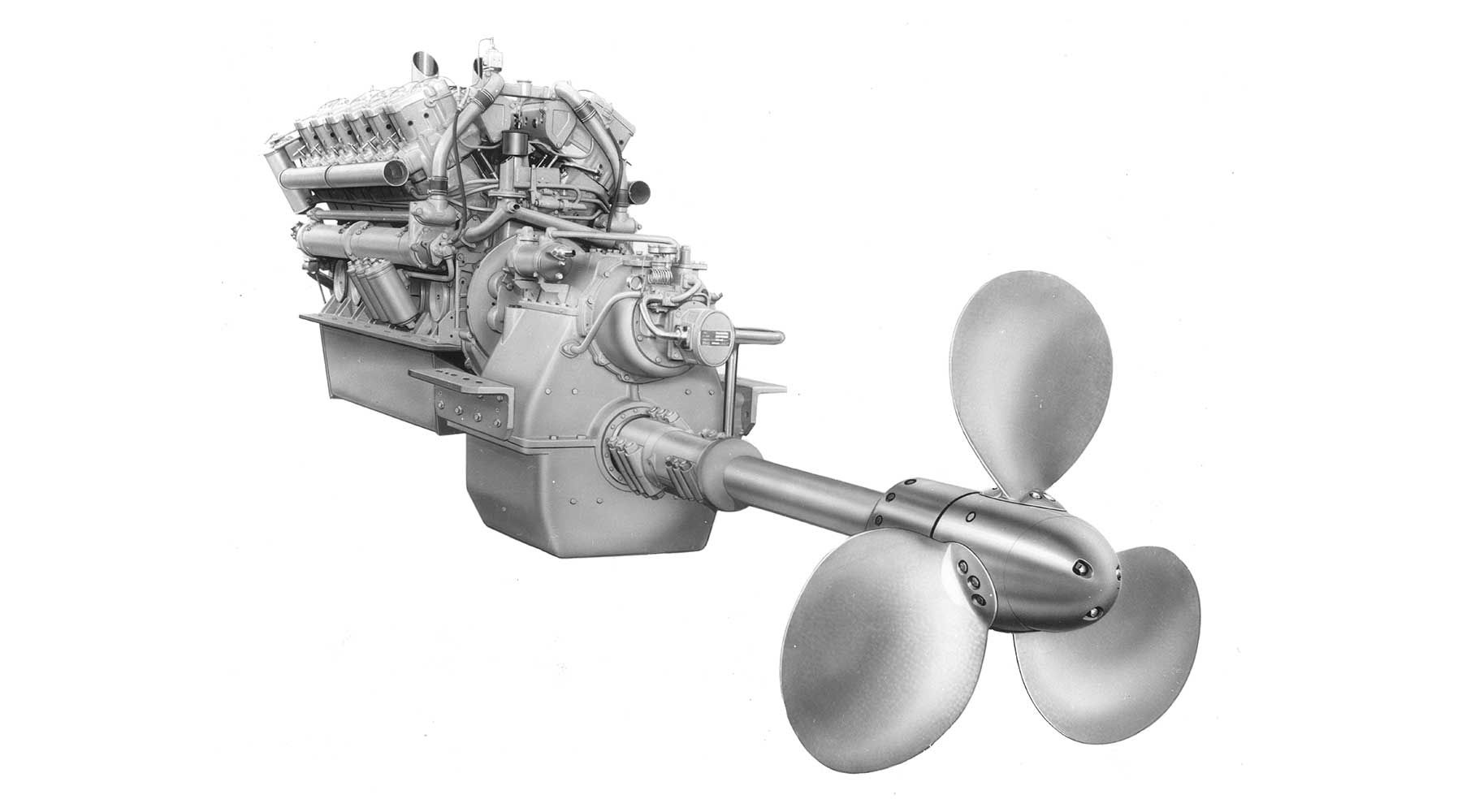
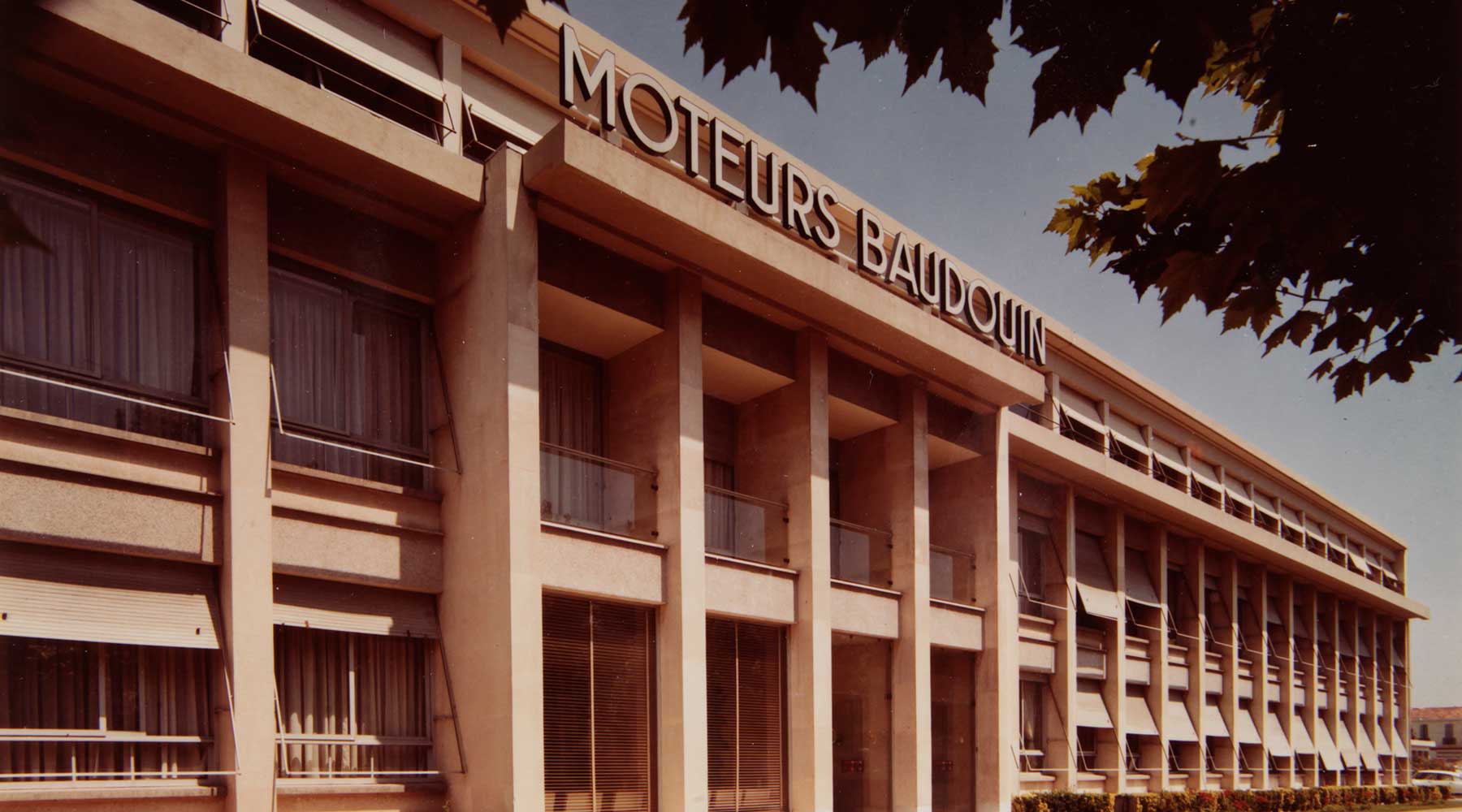


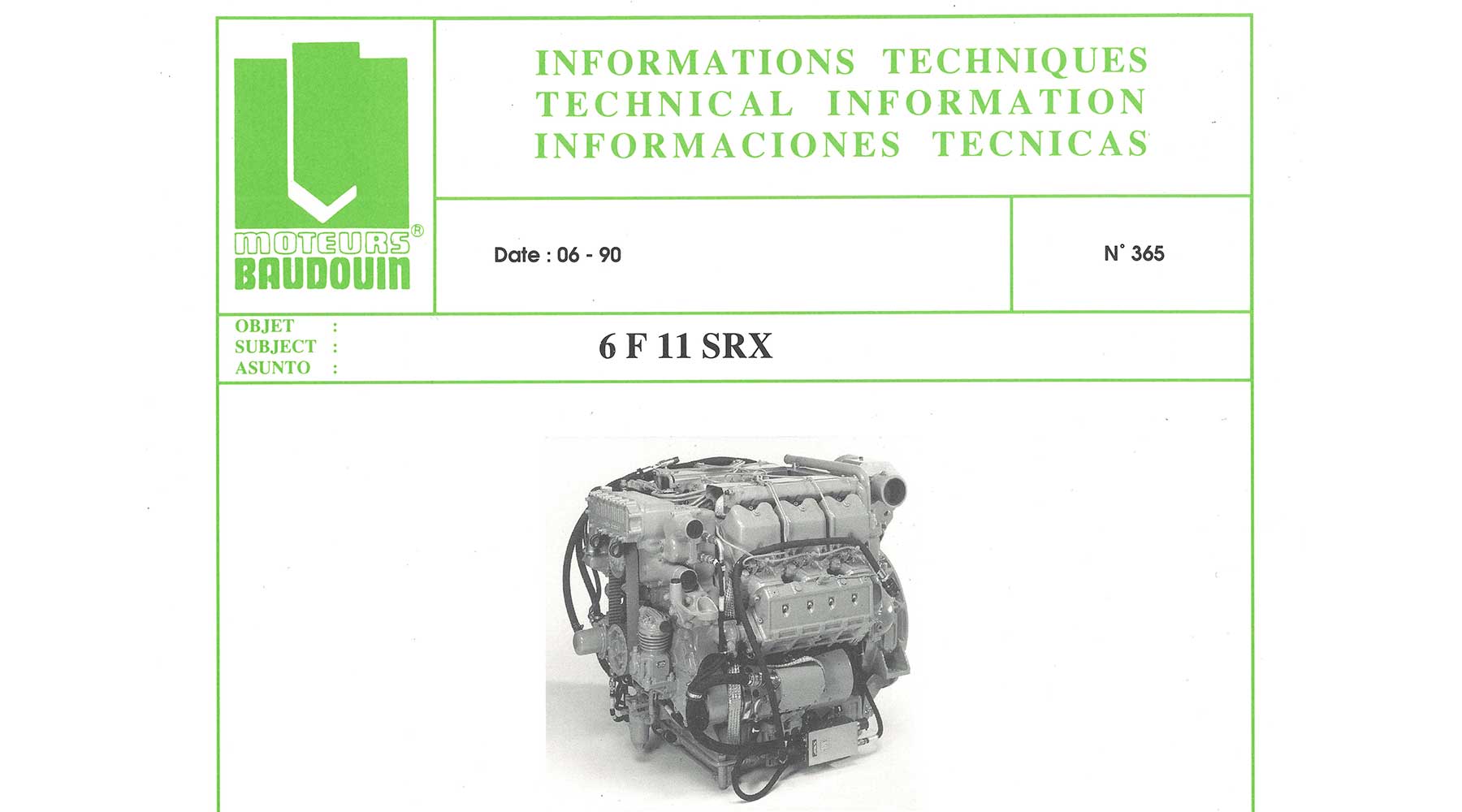


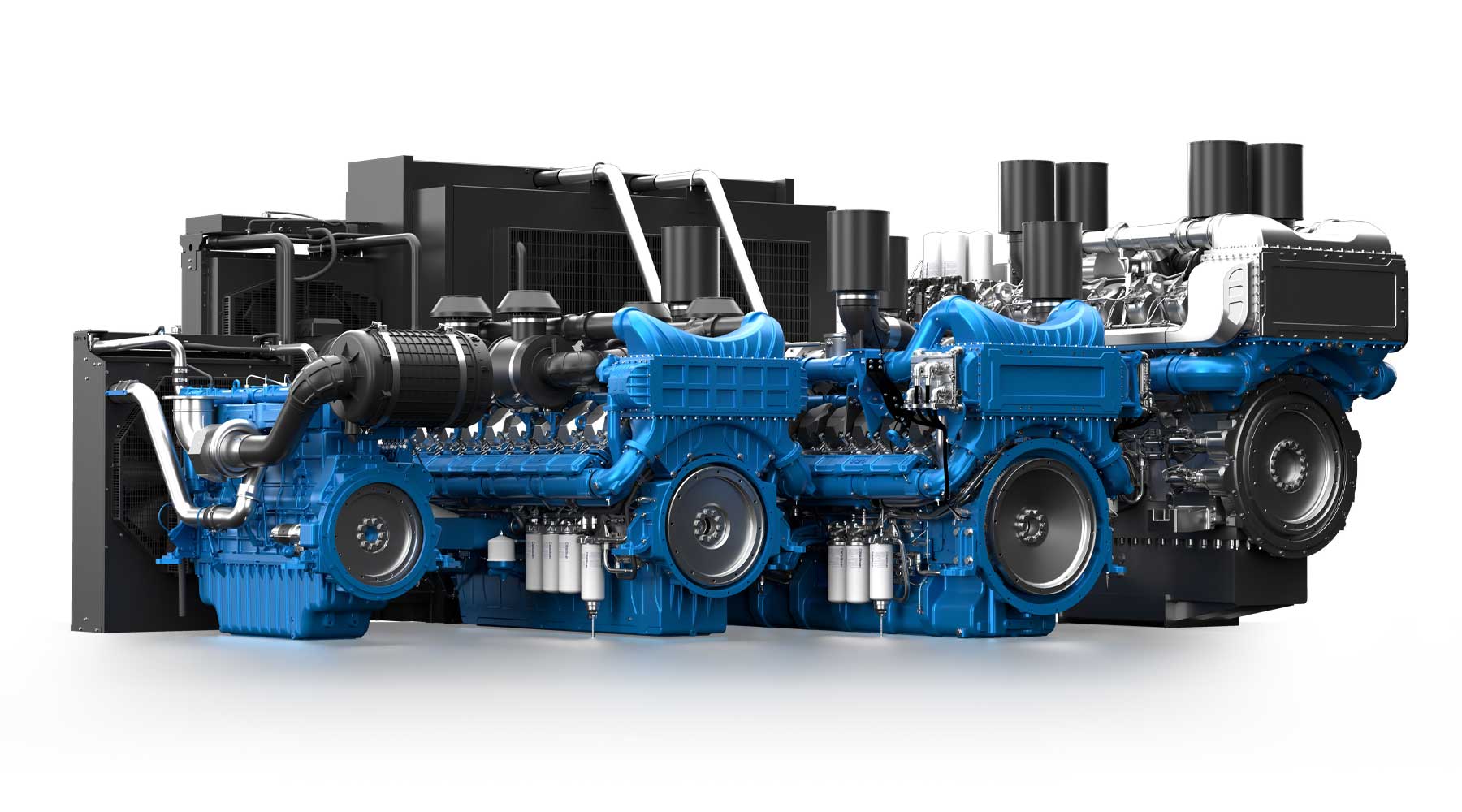
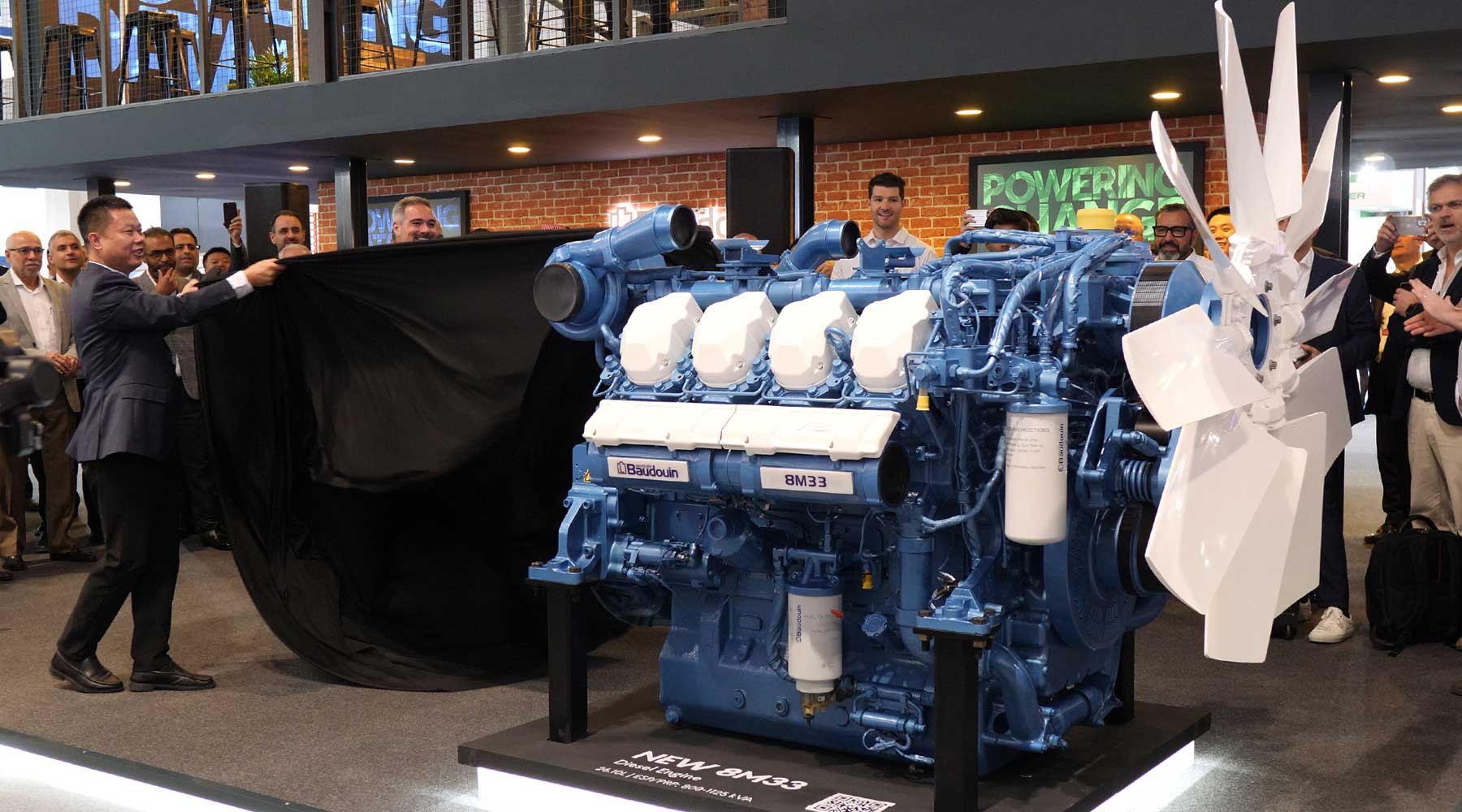
1900-1918: The Founding Family
Many years before our history began, the Baudouin family lived and worked in the busy port city of Marseille. By the end of the 19th century, the head of the family, Eugene Baudouin, owned a metal foundry where he oversaw a workforce casting metal into everything from large church bells to tiny ‘movements’ for wristwatches.
Eugene’s sons, Richard and Charles Baudouin, grew up watching their father at work in the hot and unforgiving environment of the foundry, along with their sister, Jeanne Baudouin.
After his education, Richard chose not to follow in his father’s footsteps into the metal industry. Instead, he turned to the local shipyard trade, becoming the owner of the Pharo Shipyard in Marseille.
Meanwhile, Charles took an interest in mechanical engineering. It started as nothing more than a hobby. Then in 1904, he unveiled his latest experiment: a small petrol-fuelled engine attached to a canoe. Wanting to test his new creation, Charles took the canoe to nearby Toulon. There, he set off across the blue waters of the Mediterranean. It might have seemed impossible, but he powered it all the way to the coast of Algeria, more than 750 kilometres away!
Little did any of the Baudouin family know just how important that little canoe would be. That it would be the first official ‘Baudouin engine’, and the beginnings of a family brand that would, in time, dominate the world of marine propulsion.
1918-1920: Starting Small
In 1919, Marseille was the busiest port in France, if not all the Mediterranean. Not only did it give easy access to international ships, it was also connected to the country’s own inland waterway network via a canal that led into the River Rhone. All this shipping traffic meant the Baudouin workshop became popular with the local marine trade, from fisherman to those sailing pleasure boats in and out of the harbour.
The first commercial Baudouin products were made to order for these clients. Very simple by today’s standards, they were basic petrol engines, outputting a maximum of 5hp. Using the years of experience gained in the Baudouin metal foundry, they made gearboxes for small boats too.
As demand grew, Baudouin began creating bigger runs of their engines, upping production to a much larger scale. More staff began to work in the workshop, and soon the business was booming.
The early engines were named alphabetically, followed by a number indicating how many cylinders were used. Company records show a variety of these early models: A1, A4, B2, B4, C1, E2, E4, and E6. Then, as the dawn of a new decade approached, the company entered a new era of manufacturing.
1920-1930: The First Product Range – O, T, Y and Z
As the 1920s began, Our history entered a new phase. Gone were the made-to-order engines of the previous decade. In their place was the company’s first-ever product ‘range’, designed to meet the demands of the marine industry.
Unveiled in 1922, the O, T, Y and Z petrol engines covered a range of outputs from 3 to 60hp, each one designed with two words in mind. These two words have continued to be Baudouin’s philosophy to this day… simple and robust.
Next, Baudouin’s first diesel-powered engine was released into the market, called the DA – just as the world faced an economic crisis following the Wall Street Crash of 1929. Like their engines, Baudouin was robust enough to weather the storm, and the DA became a huge success. The business was flourishing, with engines selling well domestically and being exported across the French-speaking territories of North Africa.
As the decade ended, Baudouin was ranked in the top three manufacturers worldwide for marine engines. They had come a long way in just ten years.
1930-1940: The DB Era
Fuelled by the success of their first DA diesel engine, Baudouin set to work on a follow-up.
Released in 1930, the DB series was an innovative new product range, available in an array of versions including 2, 3, 4 and 6 cylinders across an output of 25 to 90hp.
One of the most distinctive features of these engines was the use of individual cylinder heads. This meant that maintenance could take place on one cylinder, without dismantling the others. This ensured cost savings on servicing and made them especially popular.
DB engines were also the first of their kind to feature rotation speeds of 750rpm; almost doubling the limits of previous diesel engines.
Being faster, more powerful and easier to maintain, the DB engines stayed in production for 27 years, selling over 13,000 units worldwide.
For another decade, Baudouin was still at the cutting edge of innovative engines that delivered and truly powered success.
1940-1950: Post-War Years
During the Second World War, maritime technology developed at an astonishing rate. Post-war, Baudouin quickly set to work. A new engine range was released, the low-speed DG series, available with 3, 4 and 6 cylinders. It was not the success Baudouin was hoping for due to the engines being quite heavy, and sales did not take off.
Moving on, they prepared the GV range (8 and 12 cylinders). More successful, they were mainly utilized by clients in many marine applications. The range consolidated Baudouin’s position as one of the top marine producers in the world. Part of this success was the further expansion of the company’s product offering. No longer just manufacturing the engines, the Baudouin catalogues now offered an array of gearboxes, propellers and diesel generators.
The strategy worked well and Baudouin’s profits – and market share – continued to rise. Capitalizing on the success, the next generation of engines was unveiled. Called the DK range, they are the most famous in the history of Baudouin. DK engines featured a 140mm bore and delivered power from 40 to 150hp. Famously reliable and robust, they were offered in 2, 3, 4 and 6 cylinder versions. In what is probably the greatest testament to their quality of manufacture, hundreds of DK engines are still in use today.
With over 22,000 DK engines sold in this period, Baudouin’s business was booming.
1950-1960: Expanding the product Line
As the 1950s progressed, the business enjoyed another period of rapid expansion. More product lines were created and released to a growing customer base.
First, Baudouin released the DV series. Available in 4, 6, and 8V configurations, the new engines dramatically increased outputs to 900hp. They were followed by the successful DVX range.
As well as expanding the product line, customer service was strengthened, with the launch of the Baudouin training center which could travel direct to clients, showing them how best to utilize the engines in situ. A milestone came in 1963, with the retirement of engineer Antonin Pouillot, who had designed every Baudouin engine released in the previous 40 years.
To honour Pouillot, the next product line was named the DP series. The first with turbochargers, the engines could reach outputs of 680hp at 1800rpm. They were more compact than any other Baudouin engine, and noticeably cutting edge in design.
With the DP series, the equivalent of 5,500,000hp was produced globally. By the close of the 1960s, Baudouin had the attention of the world’s markets.
1970-1980: Challenges & Changes
Having enjoyed decades of growth and success, the 1970s brought economic challenges to Baudouin.
Challenges which affected many businesses around the world at this time. To maintain turnover, Baudouin diversified into power generation engines, manufacturing them for some of Europe’s biggest Original Equipment Manufacturers (OEMs). The Baudouin-powered machines would then be packaged into stationary open and enclosed gensets, along with mobile versions for rental.
Retaining the same qualities as Baudouin’s robust marine engines, they were built for continuous power, with outputs from 45 to 680 kVa. This early experiment with generator drive engines was a precursor to Baudouin’s PowerKit range, which saw a return to power generation almost 40 years later in 2017.
At this time in their history, Baudouin also went into partnership with well-known brands such as John Deere and Renault. The products released in association with these industry leaders were named the ‘D’ and ‘R’ series respectively. In 1983, Baudouin developed the D106 series, with engines ranging from 70 to 170hp.
Despite some early success, as both brands grew and began to target the marine industry independently, a conflict of interests arose. It was decided to move on and stop the cooperation. Baudouin returned to find its own way in the industry, alone.
1980-1990: The Need for Speed
The company decided to try unchartered waters, quite literally, by tackling the pleasure and speedboat markets. It was a return to the ‘marine DNA’ instilled in the company from its founding years.
In order to build brand awareness, Baudouin entered the exciting world of offshore racing, with speedboats powered exclusively by their engines. Adapted from the new F120 range, they were named VTI engines (a nod to GTI engines used in motor racing). Soon, Baudouin was making waves. With Luigi Radice at the helm, the Castello di Gancia, powered by two 1100hp VTI engines, entered the 1989 F1 European Offshore Championships.
The name ‘Baudouin’ was proudly emblazoned on its side. Afterward, there were podium finishes for Baudouin in the Monaco and St Tropez Grand Prix races, and a first place in the Cannes Offshore Race.
Baudouin succeeded in their cross-market appeal, and commercial versions of the VTI engines were released to eager customers. The expanded VTI range helped move Baudouin into new markets.
1990-2008: A State of Flux
As the business headed into the 1990s, there were more challenges ahead. To weather these tough times, a tough strategy was set out: Baudouin would go back to basics and focus on the military and fishing markets. Two avenues that had been the most successful in previous years. Surprisingly, the company was kept afloat by an unexpected revenue source: the spare parts business.
In 1991 this accounted for 40% of annual turnover. For a time, the export market was targeted: the focus was the new M26 engine. Designed for continuous power it was available from 225 to 900hp at 1800 rpm.
Shortly after, the M26 SR supercharged engine followed. Although a mild success, with exports accounting for some 70% of the business, it was not enough. Behind the scenes, Baudouin underwent several changes. Ownership changed hands to ASD Industries, and later, AXA Private Equity.
By 2008, Baudouin was on the move and relocated to a new site in Cassis. Based in Marseille since the early days, it signalled the beginning of an end.
By the close of the year, Baudouin entered receivership. It seemed they would surely not see the end of the decade. But there was a light at the end of the tunnel, shining from the East.
2008: The Re-birth
Surprisingly, Baudouin’s factory doors did not close. Instead, it was the start of a wonderful new beginning.
In January 2009, Baudouin was purchased by Weichai Power, a company specializing in the design, manufacturing, and sale of diesel engines in China. The two shared many distinct qualities, including a history and wealth of experience creating both marine and power generation engines.
Baudouin was an attractive prospect to Weichai for many reasons. With its French heritage and years of expertise, Baudouin would open up trade with the lucrative Western market. Also, it offered the opportunity to acquire knowledge of the technical design and manufacturing of European products. Both would prove to be invaluable to the Weichai business. With the deal signed by Weichai’s Chairman, Mr. Tan Xuguang, the new Baudouin-Weichai partnership set to work. Baudouin was back in business.
Following the acquisition, Weichai began a program of steady investment. Over the years, this has exceeded 100 million euros, and heralded a new era for Baudouin.
In the first year of new ownership, a research and development center was opened at the Baudouin headquarters in Cassis. Here the next generation of engines began to take shape.
Weichai made other positive changes, such as upping scales of production and boosting the workforce in France. The network of agents used to distribute Baudouin’s engines was also revised, bringing inefficiencies to the sale of finished products, spare parts, and after-sales service. Behind the scenes, Baudouin was readying a new engine.
And the world didn’t have too long to wait.
2009-2017: M26 Changes the Game
As Baudouin entered its tenth decade, they unveiled a brand-new market offering: the M26.2. A follow-up to the previous M26 launched 20 years previously, it offered enhanced technical superiority and a choice of 6, 8 and 12 cylinder versions.
This new evolution also delivered greater performance while meeting the demands of the latest environmental inland regulations. Fuelled by its immediate success, Baudouin released the all-new W series with engines ranging from 130-580hp, developed together with Weichai. It was a period of further growth for both companies.
After the huge successes of the original M26 and M26.2 engines, a follow-up, the M26.3, was launched in 2016. The M26.3 engine had more power and with the common rail structure, it allowed Baudouin to meet the latest emissions regulations.
These benefits opened up new markets, clients, and applications, including the USA. A year later in 2017, Baudouin unveiled the M33 engine, available in 6 and 12 cylinders. The M33 engine, with its huge torque and excellent power density, has increased market penetration in tugboats, workboats and fishing vessels.
Both engines played a vital part in re-establishing Baudouin’s leading position in the marine power market
2017-2018: The PowerKit Range
In 2017, sensing an opportunity and using the knowledge and experience gained in the 1970s-80s with the generator drive engines, Baudouin diversified again into the power generation market. A new business segment was born: the PowerKit range of engines for power generation.
Spanning typical generator outputs from 18 to 4125 kVA, and with a choice of 9 models, it’s the largest product line in the history of Baudouin. In 2018, Baudouin launches four new engines, expanding the range to 17 – 2000 kVA and making the range one of the most extensive in the power generation industry.
With the range crafted with the same components as Baudouin’s renowned marine engines, clients can also rely on the same high levels of quality. PowerKit engines are robust, reliable, and easy to both service and integrate into a generator set. Marine is in their DNA. But PowerKit engines can be utilized in countless applications, all over the world.
2018-2023: The International Growth
The PowerKit product range has had a significant impact on the growth of Baudouin’s business. As a result of introducing these products, the company has been able to expand into new segments and new markets, leading to significant internal and external growth.
From 2020, thanks to the good foundations of the company and to the business strategy, Baudouin has continued to grow in marine and power generation through a difficult global economic environment.
To ensure continued sustainability, Baudouin has continued to diversify its product offering and technology partnerships. In 2020, Baudouin launched its first range of lean burn gas engines to the global markets. In partnership with PSI (Power Solutions International) a full range of rich burn gas followed – enabling Baudouin to deliver the widest range of power solutions available anywhere.
After 5 years of investment in research, development and testing, Baudouin launched the most compact and powerful marine propulsion engine in its category: the 6F21, which is perfect for pleasure and commercial marine applications. This is the first of the F series to be launched, with the 8, 10 and 12 cylinder versions following.
Committed to delivering ever more sustainable power solutions, Baudouin is launching standard hybrid packages for all marine M series common rail engines, which is an addition to the aftertreatment solutions available ranging from EPA 4, IMO III & EU Stage V.
Baudouin today

JOIN BAUDOUIN
At Baudouin, we are dedicated to nurturing and harnessing the potential of exceptional individuals, and this is where your journey to a rewarding and impactful career begins. Discover our diverse range of career paths, our supportive work culture, and the chance to be part of our innovative and dynamic team.